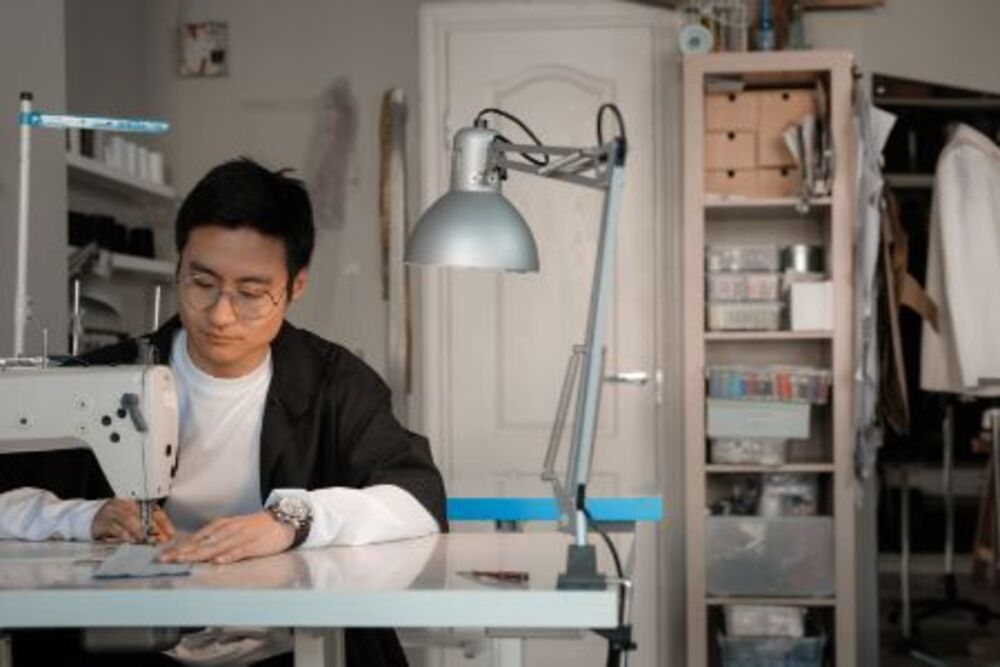An essential tool for beginners, a sewing machine is essential in their arsenal of sewing supplies. Make sure it suits your needs while providing sufficient warranty coverage. Find out more about embroidery machine for beginners.
Most basic sewing machines include several presser feet as accessories for their machine. This may include straight stitch, buttonhole, blind hem and invisible zipper feet.
Stitches
Nearly all sewing machines offer multiple stitch settings that you can use to join fabrics together, finish edges and even create decorative patterns. Explore each stitch setting until you discover which ones suit you best!
Your foot holder also features an adjustment for a seam guide, which is essential in creating straight lines on your project. You can customize its size by moving a quilting bar attached to it.
There’s also a zigzag stitch, perfect for raw edges and adding stretch to woven fabrics, as well as a triple zigzag stitch that works especially well when tight stretchy fabrics or blind hems need tightened up or created. There are even long stitch lengths specifically tailored for basting and gathering fabric.
Thread
Your choice of thread can make or break your sewing machine projects. Low-grade thread may break easily or create birds’ nests under your work; while investing in high-quality yet economical thread will save many headaches down the line.
Thread comes in many colors, materials and finishes – Coats & Clark and Gutermann are two easily-located brands offering various shades. Each spool typically lists its fibre content, manufacturer and colour number to aid later identification of thread. A common finishing technique used on thread is anti-wick, which protects it from moisture while increasing tension capacity and tension withstand. Also available are clear tinted threads which blend in invisibly with darker fabric colors.
Bobbin
It’s essential that you learn how to properly utilize and troubleshoot the bobbin in order to form stitches on fabric, as this mechanism supplies half the thread that forms stitches on fabric. If the top thread begins creating loops on fabric, this could indicate that its tension has become too loose; in such a situation it would likely be best to rethread your machine from scratch in order to improve performance.
Dust, lint and unwanted threads can collect under the plate of a bobbin case and require removal using a small stiff brush. Some models also feature an internal tightening or loosening mechanism which requires tightening/loosening with a small screwdriver (keep this tool handy in your sewing machine gadgets box).
Make sure your sewing machine uses the appropriate size bobbin; check its manual or perform an online search to identify which type your machine requires.
Needle
A needle is the long, sharp point used to puncture fabric. It typically features both a flat side and a rounded end; with the latter part facing away from your machine.
Be sure to select a needle recommended for the fabric type you plan to sew with, since an improper size or type can lead to skipped stitches and other issues.
Many machines feature an illustrated thread path with numbers and arrows to assist you with feeding the thread into the machine. You may also watch this helpful Mollie Makes video for further guidance.
Make sure to bring samples of fabrics you plan to sew to your test sewing session so you can check that your new machine can handle them without any surprises later on! Doing this will prevent any unpleasant surprises down the road!
Presser Foot
There are various specialty feet you can purchase to make sewing tasks simpler or more precise, including:
Quilting feet are essential tools for quilters. Their handy flange guides the fabric for accurate quarter-inch seams and makes stitching simple and precise.
Blind hem and pintuck feet can make sewing blind hems and pintucks easy without turning your work. This handy device is especially beneficial for delicate fabrics which would otherwise be difficult to sew by hand.
Finally, a rolled hem foot allows you to quickly and effortlessly stitch a rolled hem (similar to serger finishes). It works on both straight and curved edges of fabric.

